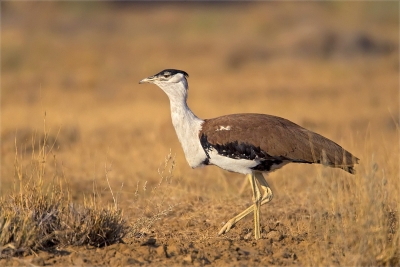
Great Indian Bustard (GIB) is a large bird with a horizontal body and long bare legs, giving it an ostrich like appearance, this bird is among the heaviest of the flying birds. The GIB lost to the peacock in the race to become national bird of India. Now it is on the verge of extinction due to modernization of agriculture practises and rapid infrastructural developments. Rajasthan government in collaboration with the Wildlife Institute of India (WII), is formulating a long-term plan to save its state bird, The Great Indian Bustard (GIB) from extinction.
Great Indian bustards make local movements but these are not well understood although it is known that populations disperse after the monsoons. Males are said to be solitary during the breeding season but form small flocks in winter. Males may however distribute themselves close together and like other bustards they are believed to use a mating system that has been termed as an “exploded or dispersed lek”. The male is polygamous.
The habitat where it is most often found is arid and semi-arid grasslands, open country with thorn scrub, tall grass interspersed with cultivation. It avoids irrigated areas. The major areas where they are known to breed are in central and western India and eastern Pakistan. The dry semi-desert regions where it was found in parts of Rajasthan has been altered by irrigation canals that have transformed the region into an intensively farmed area.
Picture Credit : Google




